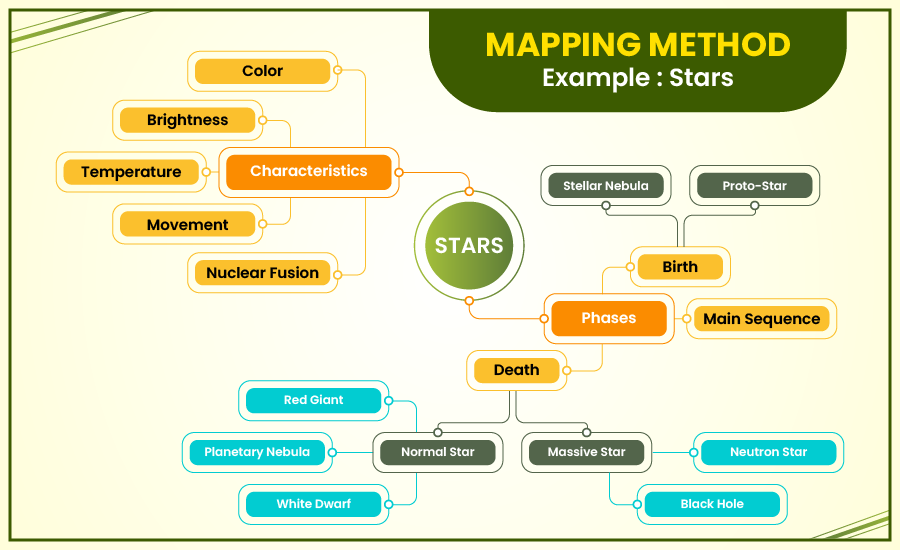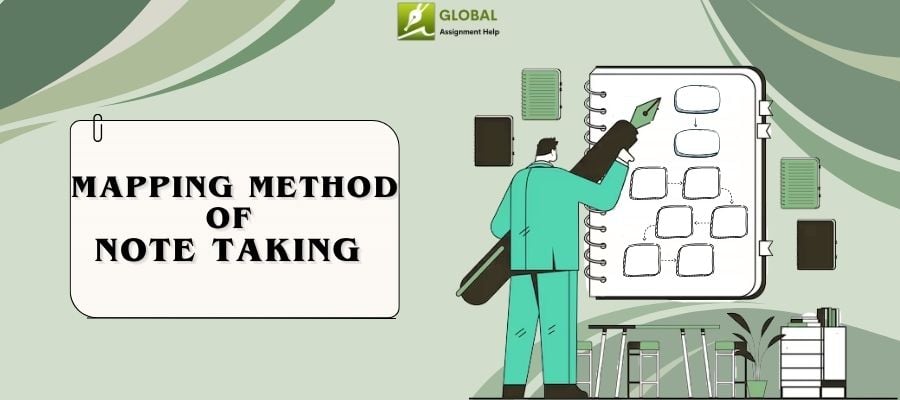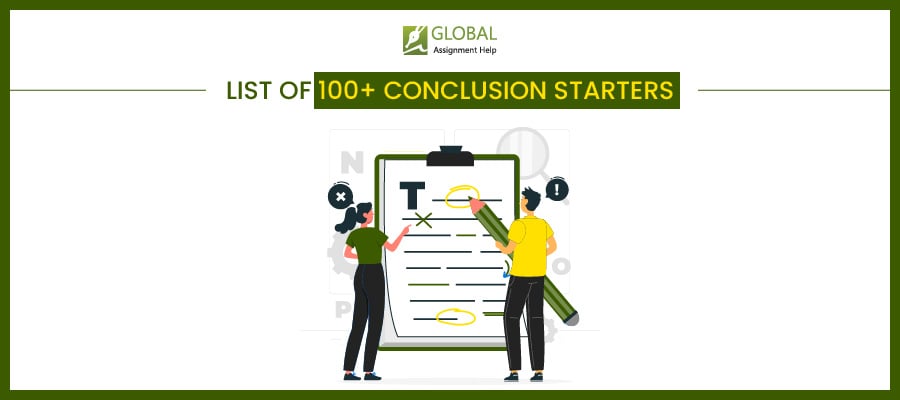Table of Contents
- When to Use this Mind Mapping Method?
- When to Use this Mind Mapping Method?
- Step-By-Step-Guide to the Mapping Note Taking Process
- Mapping Method of Note Taking Example
- How to Include Mind Maps in Your Study Sessions?
- Tips to Improve Your Note Taking with Mind Maps
- Advantages & Disadvantages of the Mapping Method
- Final Thoughts: Mapping Method
When to Use this Mind Mapping Method?
The mapping method of note taking is a popular way for students to take notes. It makes use of figures known as mind maps, concept maps, or spider diagrams. Instead of presenting content in the form of sentences, mapping takes a visual approach to present ideas centered around a core, shared idea. The mapping method kills two birds with one stone. How? Well:
1. It helps see connections of an idea to other ideas in a topic,
2. It provides a brief top-down overview of key points.
This way, it allows students to understand the core meaning behind ideas through their relationships. In fact, the basic principle of this method is to jot the central topic in a central bubble, and work outwards by adding points related to it directly. Not only is this method useful for a visual learner, but it can also offer a simple way for any learner to organise their thoughts quickly during or after a lecture. Struggling with this? Our academic writing services can help you create well-organized maps tailored to your learning style!
Learn Map Notes FastWhen to Use this Mind Mapping Method?
With many other note taking methods available to students, like Cornell, Outline, Charting, Sentence, Flow-Based, T-Notes and more, it can get confusing when to use the mind map note taking method. The answer is not as simple as you think it is. Here’s why:
- Linear methods like the Cornell, Sentence or Outline, while good for helping you remember things, are terrible for brainstorming, because of their rigid structure.
- Methods like Charting and Sentence are pretty straightforward, but passive. What you’re ultimately doing is just repeating things you already know; there’s no room for introspection.
- T-Notes, flow-based note-taking methods, while really popular, ultimately do NOT promote thinking about how concepts relate to each other or the broad context.
The mapping method of note taking is best used when you want to deal with brainstorming, or introspect on a topic, or get to know deeply how concepts are related to each other. In that scenario, instead of any other method, the mapping method for students should be your go-to choice. Here’s when you can use this method without any hesitation:
1. Lectures and Meetings:
When you want to speedily note and understand key points and relationships between specific ideas, especially when the info is being presented in a fast-paced manner.
2. Brainstorming and Ideation:
If you want to generate and explore new ideas in a free-flowing and creative manner, or make connections that cannot be presented in a linear manner, then you can use this method without a doubt.
3. Planning or Managing Projects:
If breaking down large or complex projects into smaller components is what you want to do, then this mind mapping method is your go-to method!
4. Studying and Long-Term Retention:
Creating a visual structure of any given topic will aid you in knowing and understanding the depth of the topic. It will ultimately aid you in retaining information in the long term.
5. Solving Problems or Making a Decision:
Lay out your options to explore potential solutions by visually mapping out the problem in a visual form.
6. Creative Writing and Content Creation:
If providing structure to your ideas or developing your characters is your intention, then you can easily use this note-taking method for your creative projects.
7. Presentation and Educational Materials:
Mind maps can be a valuable and creative tool to make visual aids that make it easier for your audience to understand and engage with complex information.
Thus, these were some situations that discuss when exactly you should be using the note-taking method known as concept mapping note taking. We know this sounds useful, but how exactly could you learn more, if not with our professionals?
Step-By-Step-Guide to the Mapping Note Taking Process
You must be curious about what steps are involved in this expert-recommended note-taking method known as the mapping method. Well, you'd be shocked to know that it follows just five simple steps. Let's discuss each step in the step-by-step mapping note process:
Step.1) Write Down the Main Topic
Before starting to write, you must have chosen a core idea that you will be talking about. Identify it, and use it as the core concept on which you'll elaborate. Not only will it serve as the central focus of the entire map, but it will also provide you with solid ground to stand on.
One thing to consider when starting to write with the mapping method is that you must not be too picky. Just use a broad topic, although it must not be too expansive, or the map might become large. Otherwise, proceed to place it in the middle and draw a circle around it. That's it. You're done with the first step!
Step.2) Derive Sub-Topics to the Main Topic
Now that you have chosen a central topic to cover, the next step is to derive subtopics to the main topic. For example, if your chosen topic is "Computing", then your subtopics might be embedded computing, workstations, supercomputers and so on.
Write down these branches around or below the main topics, and encircle each of them. All that's left now is for you to link the core to these nodes with arrows or straight lines. Kudos! You must already be starting to see a basic structure of a map.
Step.3) Provide Supporting Ideas
After you're done with deriving subtopics to the main idea, in the third step, you are to repeat it again. Create branches out of the subtopics, instead of the central node. Ask yourself the same questions regarding what supporting ideas these subtopics might have. If you face any issues in figuring it out, you can ping our online cheap assignment help experts, and they’ll guide you appropriately.
Ultimately, it depends upon the complexity of your topic, but this step is usually recommended to provide yourself with some in-depth knowledge regarding the topic.
Step.4) Add Further Details
Great! You’re in the final step of mapping now! All you were doing until now was basically putting information you already know into categories. Now, it is time for you to fill in the missing links!
Start by adding any further details, facts or thoughts into the diagram and connect them to the supporting ideas. By this point, it’s not necessary for you to encircle each fact and detail, although you can still do so if you prefer.
Step.5) Review the Mapped notes
You're nearly done. All that's left is reviewing. You will find that reviewing for mapping is unique. It requires you to recall the entirety of what you were studying or centering your topic on. You have to look at the central concept in its totality, forcing you to brush up on your knowledge truly.
How to do this then? Simple. Start reviewing the lines from your notes by hand. Then, try to visualise whether the relationships you've formed fit in the map or not. Go over each topic, sub-topic and idea to check whether they fit in their specific location in the hierarchy of information.
Once you're done reviewing. You've successfully completed the mapping method of note-taking. Now, let’s take a look at an example.
Mapping Method of Note Taking Example
On the topic “Stars”, we can branch out into the following:
- Characteristics: Color, Temperature, Brightness, Nuclear Fusion and Movement.
- Phases: Birth (Stellar Nebula, Proto-Star), Main Sequence, Death (For Normal Star: Red Giant, Planetary Nebula, White Dwarf)
Here’s how a mind map based on the aforementioned info would look:

With that aside, the following section includes information on how you can include these in your study sessions.
How to Include Mind Maps in Your Study Sessions?
Including maps into your study sesh can practically enhance your studies and boost knowledge by a significant margin. Here's how to use mapping for notes easily:
1. Plan Your Study Session
Start with a high-level concept map of the topic you’re dealing with. Discuss core themes, subtopics, and things you need to cover. This gives you a clear roadmap for your session.
2. Summarize Key Points
After studying, create a summary mind map to consolidate your learning. Focus on key points and their relationships, which helps reinforce memory.
3. Review and Refresh
Incorporate mind maps into your review process. Quickly scan your mind maps before exams to refresh your memory and reinforce the main ideas.
By including mind maps in your study routine, you build a visual and organized approach to learning that enhances understanding and retention. While using the mapping method would definitely help, homework might still remain an issue. For that, you don’t need to worry, we have experienced professionals for all your “pay someone to do my homework” concerns!
Tips to Improve Your Note Taking with Mind Maps
Effective note-taking, primarily through the mapping method, can significantly improve understanding and memory retention by organizing complex information visually. The mind mapping method of note taking is perfect for studying, brainstorming, or problem-solving.
Start with a Central Idea
The foundation of a mind map is a central idea, which represents the main topic you're focusing on. Place it in the middle of your page or digital tool.
Branch Out the Key Subtopics
Once a basic idea is decided upon, branch out the key subtopics. Each of these branches would help break down the concept into easy to read sections.
Use Keywords, Not Sentences
These maps shine when they’re kept concise. Therefore, don’t write lengthy sentences. Instead, focus on keywords or small phrases that describe each point. Lengthy sentences are best reserved for your assignments! An issue you might run into with long sentences is grammar. Don’t worry! We have a solution for that as well: our free grammar checker.
Incorporate Colors, Symbols, and Images
Enhance your map with colors, symbols, or images to make it more visually pleasant and easier to recall. You can even use the following tools for digital note mapping: Coggle, MindNote, XMind, Mermaid.js, etc.
Thus, if you use these tips, you can make use of the mapping method effectively. If there is one more thing left for us to discuss, it is perhaps the advantages and disadvantages of the mapping method.
Advantages & Disadvantages of the Mapping Method
Like the two sides of a coin, there are obvious drawbacks and limitations to everything. The mapping method is not an exception to this rule. While it has its specific use cases, where it shines as bright as the sun in a summer noon, it is, however, NOT a universal method. Before we discuss the limitations, let's discuss the advantages of mapping method of note taking:
1. Offers a visual expression of topics and how each of them are inter-lined, helping with in-depth comprehension and retention.
2. It helps one logically connect related ideas and concepts with much ease.
3. Supports memory retention since it involves images and color.
4. Highly efficient for reviewing and reinforcing proper comprehension of any text.
Having discussed the benefits of mapping notes, now let's discuss the disadvantages of mapping method of note taking.
1. Less practical or capturing detailed or linear information, i.e., facts.
2. Can get too complex too early, especially when you use it for dealing with heavy subjects. Moreover, it risks oversimplification of information.
3. It demands a high focus and the ability to choose between main ideas and minute details.
4. It is not helpful on its own; it needs other note-taking methods for in-depth coverage.
Final Thoughts: Mapping Method
In conclusion, we can safely say that the mapping method of note taking is an exciting and nifty way to take notes for any student. Its usage is much more practical for active note-taking during a lecture, with a focus on long-term retention and in-depth understanding, rather than just rote memorisation. However, our experts at Global Assignment Help suggest that it has its own use cases and is not recommended for all scenarios.
What is the difference between a postgraduate and an undergraduate dissertation ?
How much time should be spent writing a dissertation?
Free Tools

Easy to Use Paraphrasing Tool to Simplify Complex Academic Writing
Check Now
Get Structured Outline by Professionals for Your Dissertation
Check Now
Effortlessly manage citations and references with our smart referencing tool
Check NowPrice Calculator
- Plagiarism
- Pricing
- Order Now
- Call Back
- Live Chat

Limited Time Offer
Exclusive Library Membership + Free 300$ Wallet Balance

Get $300 Now
Update your Number



































Thank you for submitting your comment on this blog. It is under approval. We will carefully review your submission and post it on the website.